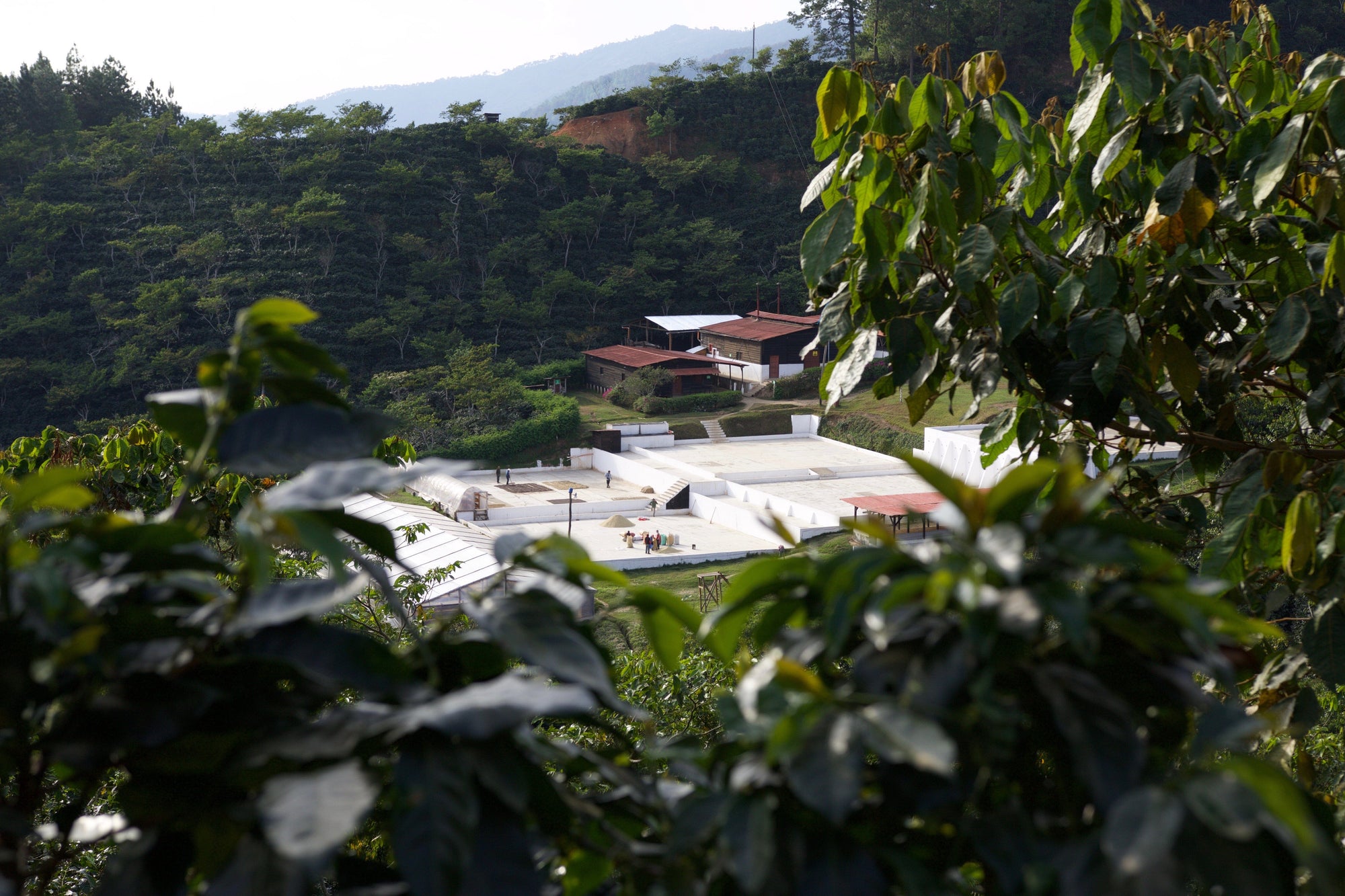

Santa Ana la Huerta
Late Saturday evening we arrived in Guatemala, straight from Ottawa where we competed in the Eastern Barista Qualifiers - we're happy to say we won first prize. You can read about our experience here.
The plan for this trip to Guatemala was to select coffees from Buena Vista, Hunapu, Carmona de Pulcal, Santa Ana la Huerta and perhaps add a new offering to the menu. We're thrilled to say we conquered all of our goals. Here's a recap of our experience:
On Sunday morning, we were picked up by Rony Asensio, the owner of Santa Ana la Huerta. This is a farm we've been purchasing from for the last two years but have never had the opportunity to visit, as it's about a 3 to 3.5 hour drive from Guatemala City. It sits in a department that's not known for coffee production called El Progreso. It's quite the scenic drive heading there. You go up and down, through lush green terrain to dry desert areas, paved roads to unpaved roads to roads seeing heavy construction. It was totally worth the trek.

We spent the a night at the farm so we had time to see all aspects of production. Our tour started at the nursery, where Rony is growing some intriguing new varietals as future prospects. There's Obata, Tupi, Catigua, Yellow Bourbon, Caturra, Costa Rica, Bourbon, Villasarchi, Catimor, Geisha and a few others. Lots to look forward to. Some experimental, some for high yield. Overall, the farm sits at between 1550 and 1650 metres in a long belt-like orientation at the top of a mountain. It's important for Rony and his team to have varietals of coffee that ripen at different times, so the harvest can be staggered throughout the season and not all happen at once!
We toured a solid portion of the 110 hectares that are planted with coffee. The farm management is very solid, with a systematic approach to pruning and maintaining their trees. Every year they trim every third row of coffee plants down to one metre and the branches to 20 inches. This allows the tree to keep its energy concentrated to a smaller footprint and focus on rejuvenating it's leaves and cherries. The next year, they do the same to the next row of trees, and this keeps going each year, rotating row by row. It's a great system. It allows the trees to stay healthy, receive optimal sunlight since the neighbouring branches are trimmed back and stay maintained and organized throughout their life span. Pretty ideal situation.

We visited the wet mill, where they process all their coffees. They have three pulpers, five fermentation tanks, a demucilager, a Kenyan style washing channel and a pretty savvy green house with tiered African-style beds. It's a really clean and organized operation. One of their main goals right now is to minimize the amount of water used in processing, which they've managed to get from 64 cubic metres to 6 cubic metres in recent years. There's also a water treatment area that utilizes micro-bacteria to consume the sugars in the water, so it can cleanly reenter the ecosystem.

The farm isn't totally free of pesticides or fertilizers, but they're conscious of their usage and are utilizing a style of agriculture called Integral Farm Management. Basically, they only apply fertilizers in small amounts, as prevention, when they feel it's an absolute must. And of course, the system they use for pruning keeps away a lot of pests and diseases that can appear alongside the coffee plants.
They ensure they harvest all cherries with 8 total passes through the fields. If you leave cherries on the branch, it can cause a lot of problems for the plant. It's an opportunity for broca to lay eggs and attack the fields. It halts the coffee tree from producing flowers and preparing for the next season, and it can lead to molds or rots that become unhealthy for the plant. Rony called his team that harvests the cherries, 'Picky Pickers.' Which we liked a lot.
These near 250 workers live in nice accomodations right on the farm during the season. We were impressed with the cleanliness, the food that was offered and the services available. The worker housing is the exact same build out as the house that we stayed in over night. Equality for all.

We're happy to be able to offer Santa Ana la Huerta for a third straight season on our menu. Rony must have told us about 30 times how happy he was too. You can find it as a featured Single Origin and as a component of the Turning Point later this season.
For the remainder of our brief, but jam packed experience in Guatemala, head to our other Journal entry.
1 comment
-
This is extremely interesting. The blog is written so well. It takes only the imagination of actually being there to witness. Thanks to all the Farmers and their Workers to produce the coffee I drink every day. Thank you Rosso for taking us on this trip to better understand all the work that goes into a cup of coffee.
Cheri Murtagh on










